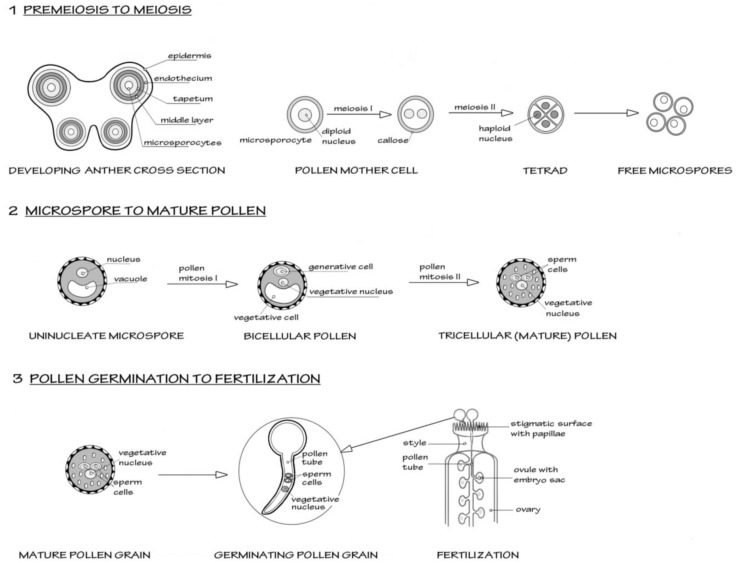Figure 1.
Scheme to show the three major stages in male reproductive development in flowering plants, from premeiosis through to fertilization (syngamy). The model organism Arabidopsis thaliana is taken as the basis for this simplified scheme. Section 1 shows the events in the early anther development, where diploid microsporocytes undergo meiosis to form four haploid microspores, the first stage of male gametophyte development. All four microspores survive and further differentiate as shown in Section 2. Two mitotic events occur. The first mitosis (pollen mitosis I) is highly asymmetric and forms a larger vegetative cell and a smaller generative cell. The generative cell then undergoes pollen mitosis II, to form a pair of sperm cells suspended in the vegetative cell cytoplasm. After this mitosis, the pollen undertakes programmed dehydration and is released from the anther. Section 3 shows the events after the pollen grain alights on a suitable receptive stigma. The pollen grain rapidly hydrates and initiates a new phase of growth as the vegetative cell forms a pollen tube. The rapid tip-based growth of the pollen tube penetrates the stigmatic surface and then grows through the tissue of the style towards the ovary. The pollen tubes are attracted to the ovules containing the embryo sac (the female gametophyte). As the pollen tube enters the ovule, it bursts to liberate the two sperm cells. One sperm will form the diploid zygote after fusing with the egg cell. The other sperm initiates triploid endosperm formation after fusing with the nuclei of the central cells.

